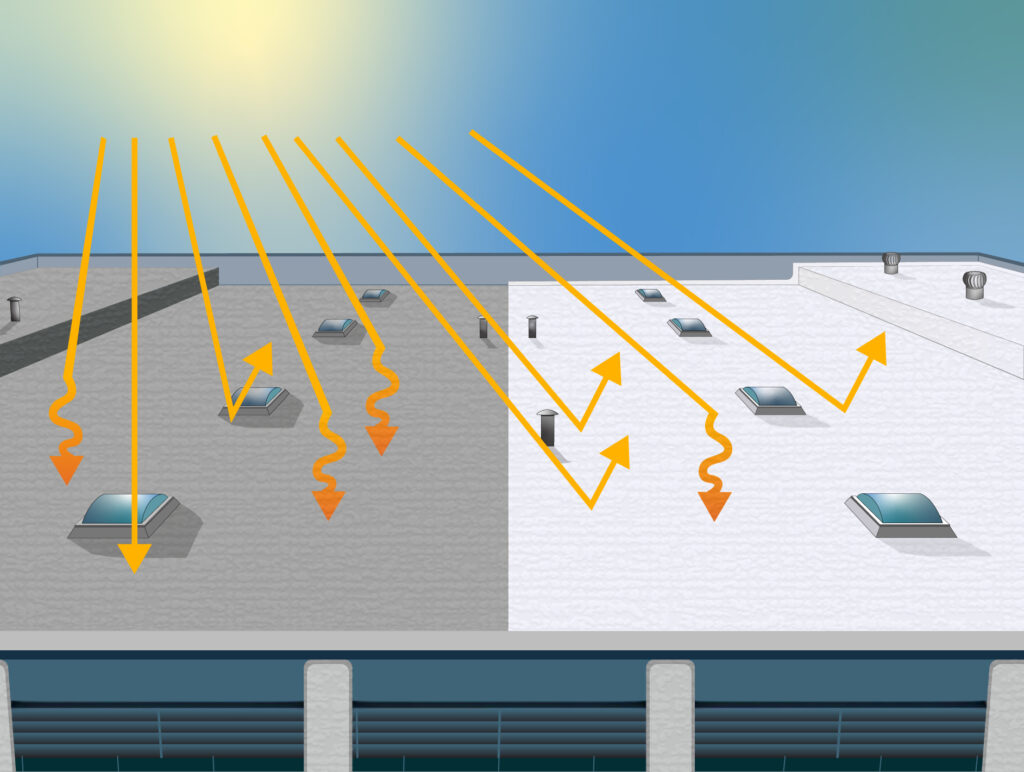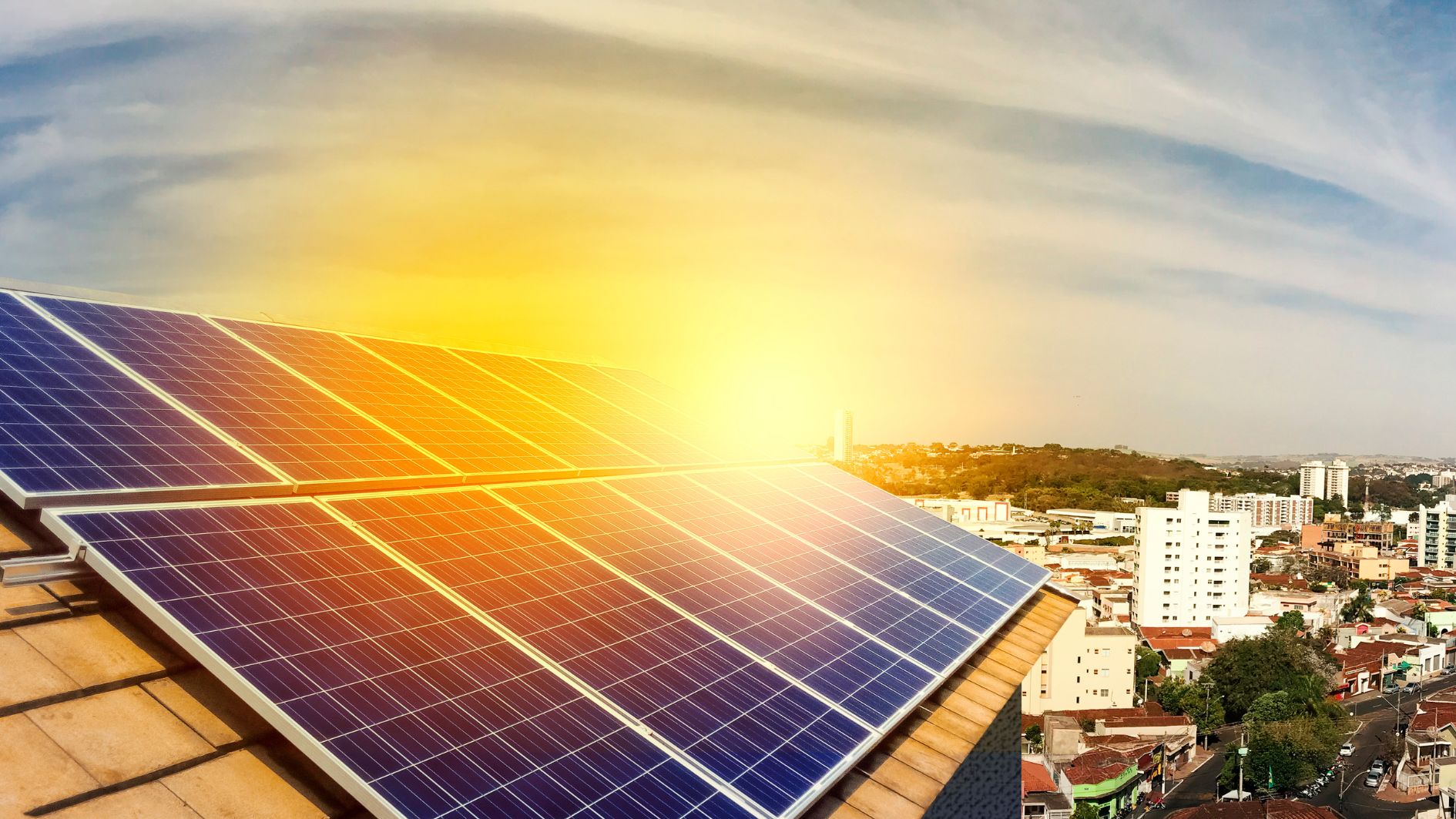Image source: Canva.com
Solar energy is the energy generated by the sun through the process of nuclear fusion. This fusion occurs when hydrogen atoms collide and fuse in the sun’s core to form helium atoms, releasing a tremendous amount of energy. This process, called the proton-proton (PP) chain reaction, powers the sun and other stars of similar size, maintaining temperatures around 4 million degrees Kelvin (approximately 4 million degrees Celsius or 7 million degrees Fahrenheit).
In larger stars, about 1.3 times the size of our sun, the carbon-nitrogen-oxygen (CNO) cycle predominates in energy production. While it also converts hydrogen to helium, it involves carbon, nitrogen, and oxygen as catalysts. Currently, the CNO cycle accounts for less than two percent of the sun’s energy.
Both the PP chain reaction and the CNO cycle release immense energy in the form of waves and particles, constantly streaming solar energy throughout the solar system. This energy sustains life on Earth by providing warmth, driving wind and weather, and supporting plant and animal life.
Solar energy travels as electromagnetic radiation (EMR), which includes a range of wave frequencies and wavelengths. High-frequency waves, such as gamma rays, X-rays, and ultraviolet (UV) radiation, have short wavelengths. Most harmful UV rays are absorbed by the Earth’s atmosphere, though some penetrate and can cause sunburn. Infrared radiation, with much lower frequencies and longer wavelengths, carries most of the sun’s heat to Earth.
Between infrared and UV radiation lies the visible spectrum, encompassing all the colors we perceive. Red light has the longest wavelengths, nearest to infrared, while violet light has the shortest, closest to UV.
The Natural Benefits of Solar Energy
Greenhouse Effect
The infrared, visible, and ultraviolet (UV) waves from the sun play a crucial role in warming Earth through the greenhouse effect. Approximately 30% of the solar energy that reaches Earth is reflected back into space, while the remaining 70% is absorbed by the atmosphere and the planet’s surface. This absorbed energy heats the surface, which then emits infrared radiation. As this infrared radiation rises through the atmosphere, it is intercepted by greenhouse gases, such as water vapor and carbon dioxide.
These greenhouse gases trap heat, functioning like the glass walls of a greenhouse, thus keeping Earth warm enough to support life.
Photosynthesis
Nearly all life on Earth depends on solar energy for sustenance, either directly or indirectly.
- Producers
Directly depend on solar energy, absorbing sunlight and converting it into nutrients through photosynthesis. These autotrophs include plants, algae, bacteria, and fungi, forming the base of the food web.
- Consumers
Depend on producers for nutrients. Herbivores consume plants, carnivores and omnivores eat both plants and other animals, and detritivores break down dead organic matter.
Fossil Fuels
Photosynthesis is also the origin of fossil fuels. Around three billion years ago, the first autotrophs evolved in aquatic environments, thriving on sunlight. Over millions of years, the remains of these autotrophs accumulated and were buried deeper into the Earth, subjected to high pressure and temperatures, eventually transforming into fossil fuels like petroleum, natural gas, and coal.
Humans have developed methods to extract these fossil fuels for energy use. However, fossil fuels are nonrenewable resources, taking millions of years to form and depleting faster than they can naturally replenish.
Capturing Solar Energy
Solar energy, a renewable resource, can be harvested using various technologies for homes, businesses, schools, and hospitals. These technologies include photovoltaic cells and panels, concentrated solar energy, and solar architecture. Solar radiation can be captured and converted into usable energy through active or passive methods.
Active Solar Technologies
Active solar technologies use electrical or mechanical devices to convert solar energy into heat or electricity.
Photovoltaics
Discovered in 1839 by French physicist Alexandre-Edmond Becquerel, photovoltaics is the process of generating electricity directly from solar radiation. Photovoltaic cells, usually made of silicon, absorb sunlight, which knocks electrons loose. An electric field directs these electrons into a current. Photovoltaic arrays, consisting of multiple solar panels, can power anything from calculators to power stations. They were first widely used on spacecraft and are now found in photovoltaic power stations worldwide, supplying electricity to homes and businesses. Solar panels can also be installed on buildings and roads, powering smaller devices like calculators and parking meters.
Concentrated Solar Energy
Concentrated solar power (CSP) uses lenses and mirrors to focus sunlight into a smaller area, heating a fluid that generates electricity or fuels another process. Types of CSP include solar power towers, parabolic troughs, and Fresnel reflectors. Solar power towers use heliostats to direct sunlight to a collector tower, where it heats a fluid such as liquid sodium to generate power. Parabolic troughs and Fresnel reflectors use differently shaped mirrors to concentrate sunlight. The largest CSP facility is the Solar Energy Generating System (SEGS) in California’s Mojave Desert, generating over 650 gigawatt-hours of electricity annually. CSP can also be used on a smaller scale for solar cookers, providing a smoke-free, fuel-free, and fire-safe way to cook food and boil water, improving quality of life in various regions.
Passive Solar Technologies
Passive solar technologies rely on the local climate to heat structures in winter and reflect heat in summer without external devices. They use design features like large windows, thermal mass, and strategic shading to maintain comfortable indoor temperatures naturally.
Architects and engineers often incorporate passive solar design during the planning stages of construction. By aligning buildings with the sun’s path, they can optimize sunlight exposure. Factors like latitude, altitude, and typical cloud cover are considered. Buildings can also be constructed or retrofitted with thermal insulation, thermal mass, and shading to enhance energy efficiency.
Examples of Passive Solar Architecture
Cool roofs
Painted white to reflect the sun’s radiation, reducing heat absorption and the need for air conditioning.

Image source: ARUP
Radiant barriers
Insulation with reflective materials like aluminum foil to deflect heat, cutting cooling costs by up to 10%.
Green roofs
Covered with vegetation, requiring soil, irrigation, and a waterproof layer. Green roofs reduce heat absorption, provide insulation, and support plant life, which absorbs carbon dioxide and releases oxygen. They also filter pollutants and reduce stormwater runoff.
Urban Heat Island Mitigation
Cool roofs and green roofs can help counteract the “urban heat island” effect, where city temperatures are consistently higher than surrounding areas. Urban heat islands are caused by materials like asphalt and concrete absorbing heat, tall buildings blocking wind, and high levels of waste heat from industry and traffic. Using roof space for vegetation or reflective surfaces can help lower local temperatures.
Solar Energy and Human Impact
Since sunlight is available for only part of the day, solar energy technologies include methods for storing energy during dark hours.
- Thermal mass systems: Store heat using materials like paraffin wax or salts.
- Photovoltaic systems: Send excess electricity to the local power grid or store it in rechargeable batteries.
Advantages and Disadvantages of Solar Energy
Advantages
- Renewable resource: Solar energy is limitless, with the sun expected to last another five billion years. In one hour, Earth receives enough sunlight to meet global electricity needs for a year.
- Clean energy: Solar technology, once installed, does not require fuel or emit greenhouse gases or toxins, significantly reducing environmental impact.
- Practical locations: Areas with abundant sunlight and low cloud cover can efficiently harness solar energy.
- Solar cookers: Offer a clean, safe alternative to wood-fired stoves, which are still used by two billion people.
- Complementary: Solar energy complements other renewable sources like wind or hydroelectric power.
- Economic benefits: Successful solar panel installations can produce excess electricity, allowing homeowners or businesses to sell energy back to providers and reduce or eliminate power bills.
Disadvantages
- High initial costs: Solar technology equipment and installation can be expensive, often costing tens of thousands of dollars for individual homes. Despite tax incentives, the upfront cost is a barrier for many.
- Heavy equipment: Solar panels require strong, large roofs oriented towards the sun.
- Dependence on weather: Solar technology efficiency depends on climate and cloud cover, making it less effective in some regions.
- Variability: Sunlight is not constant, making it challenging to rely solely on solar energy in most places.
Overall, solar architecture and technology offer sustainable and renewable energy solutions, though practical implementation depends on several factors, including cost, location, and weather conditions.





